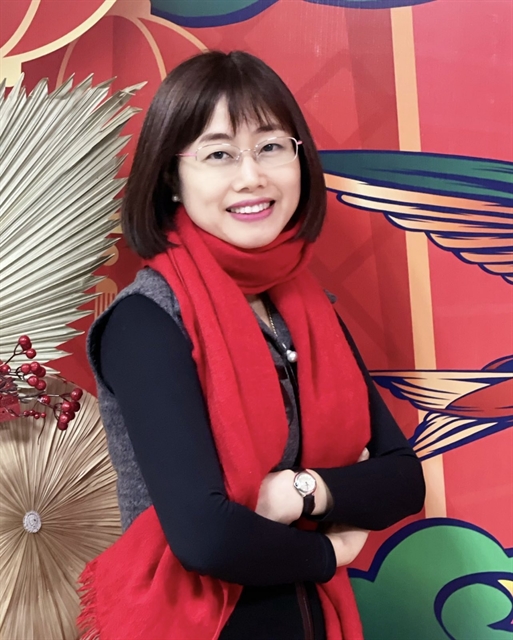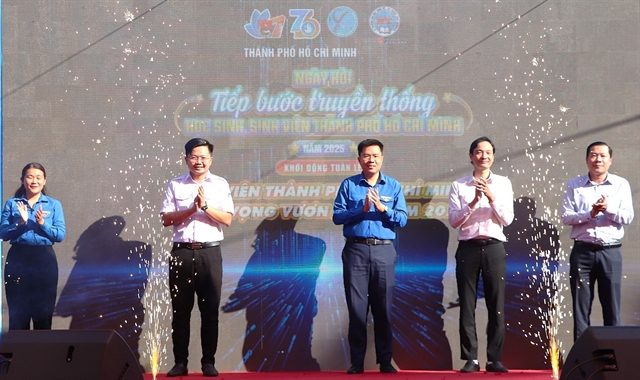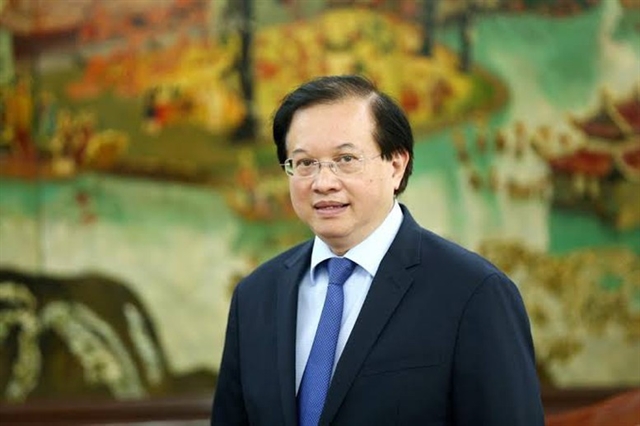 Opinion
Opinion

 |
| Deputy Minister of Culture, Sports and Tourism Tạ Quang Đông. Photo bvhttdl.gov.vn |
The Ministry of Culture, Sports and Tourism is set to merge several State-run theatres under its management. A Nhân Dân (The People) newspaper reporter speaks with Deputy Minister Tạ Quang Đông to elaborate on the goals and implications of the merger.
Inner Sanctum: The Government has issued a decision to merge several theatres under the Ministry of Culture, Sports and Tourism (MCST). Could you update us on the progress and objectives of this restructuring?
Under this decision, The Việt Nam Cải Lương Theatre, the Việt Nam Chèo Theatre and Vietnam Tuồng Theatre will be merged into the National Traditional Performing Arts Theatre. In addition to staging traditional performances, this new theatre will also be tasked with preserving and promoting Việt Nam’s traditional art forms.
The Việt Bắc Folk Song and Dance Theatre will be combined with the Việt Nam Song, Dance and Music Theatre to form the National Song, Dance and Music Theatre. Its mission includes performing folk and contemporary music, as well as collecting, preserving and developing the folk music and dance traditions of Việt Nam’s ethnic minority groups.
Following the Prime Minister’s directive, the ministry is implementing the merger cautiously and scientifically. We’ve conducted a thorough review of each theatre’s organisational structure, human resources, creative capacity and production scale. The aim is to preserve artistic identities while fostering collaboration among different art forms.
This merger aligns with broader efforts to reform public agencies in the cultural sector - not to erase identities, but to unify and revitalise Việt Nam’s traditional arts. It seeks ways to streamline operations, reduce redundancy and increase management efficiency.
Ultimately, the goal is to build modern, versatile and autonomous theatres capable of producing large-scale performances for regional and international audiences, while preserving heritage through innovation, audience engagement and cultural tourism.
The reform also encourages financial autonomy, professional communication and reduced dependency on state funding.
Inner Sanctum: What are the advantages and challenges in the merging process?
One key advantage is the strong backing from the Government. The current drive to streamline public agencies, guided by the Việt Nam Communist Party's resolutions and the Prime Minister’s decisions, has created clear legal and strategic frameworks for the merger.
National cultural and sports planning for this decade and beyond provides solid direction, paving the way for unified implementation and long-term development of these theatres into influential cultural institutions.
The merger enhances organisational efficiency by reducing redundancy, streamlining staffing and management, and optimising shared finances and personnel. A larger, unified theatre makes it easier to attract socialised funding.
It also opens artistic opportunities – combining strengths from each theatre, sharing facilities, staff and experience, and enabling large-scale productions with both national and international reach. The merger encourages a shift in mindset, from administrative to creative and market-oriented thinking, and promotes collaboration between artists of different styles.
However, this is no easy task. It requires careful, step-by-step implementation with coordinated solutions in policy, staffing, finances and artistic development.
Artists and performance quality remain central; the merger is not just about reducing numbers but restructuring and elevating State-funded theatres towards a more modern, professional model aligned with global standards.
Nonetheless, change often causes disruption. Staff may feel uneasy about overlapping roles, potential downsizing or relocation. Leadership positions may become more competitive. There are also logistical challenges, such as disparities between Hà Nội-based theatres and those in mountainous regions with limited infrastructure and public access. Without a preservation strategy, regional art forms like tuồng, chèo, cải lương or Việt Bắc folklore could risk being diluted.
To address these concerns, we will maintain separate, specialised performance troupes within the new theatres, approve staffing plans and restructure leadership. It also plans retraining programmes, digital archiving of signature repertoires and promotion of traditional arts via dedicated media channels. Traditional elements will be integrated into modern formats to engage younger audiences.
Inner Sanctum: In today’s fiercely competitive entertainment market, what role does the theatre merger play in the broader development of Việt Nam’s cultural landscape?
Guided by key directives, there is a strong call to boldly reform the organisation and operation of State-funded arts agencies, and the Government and the Prime Minister have echoed this stance.
In practice, traditional arts are under intense pressure from fast-paced entertainment such as showbiz, game shows, digital platforms and social media. Without change in the form of professionalisation, stronger appeal and modern governance, traditional theatres risk being sidelined.
Merging theatres enables shared creative resources to stage large-scale, cross-genre productions on par with musicals. Audiences will benefit from more diverse and dynamic programmes.
This is not just consolidation for efficiency’s sake, but a comprehensive restructuring aimed at synergy, elevation and sustainability. The MCST sees this as a transformation that puts people at the centre. Protecting artists’ rights, encouraging young talent and preserving traditional identities within a more flexible, modern framework are core goals.
Of course, challenges exist – reconciling artistic styles, unifying teams, and reassigning roles across historically and culturally distinct institutions. But such challenges demand innovation in leadership and operational models.
Our guiding principle is clear: art must not only be preserved but allowed to thrive. The merger is not about erasing identity; it’s about unlocking creative potential long constrained by outdated systems.
With a systematic approach focused on artists, artistic quality and social impact, we believe this reform will strengthen Việt Nam’s performing arts and support its deeper integration into the global cultural landscape.
Inner Sanctum: As a key supporter, how will the MCST assist the new National Traditional Performing Arts Theatre to move beyond its past stagnation?
The merger of the Tuồng, Chèo, and Cải Lương theatres into the National Traditional Performing Arts Theatre is not just an administrative reform. It’s a strategic move to create a strong national cultural institution, one with the manpower, resources and vision to preserve and promote Việt Nam’s traditional art forms amid global integration and the rise of digital technology and AI.
As the supervisory body and a committed advocate for traditional arts, the culture ministry will implement a range of coordinated initiatives to help these art forms grow and connect with younger audiences. The focus is on restructuring and targeted investment. With fewer management layers, resources can be concentrated on high-quality, aesthetically driven productions.
Major projects will include reviving classical plays, upgrading stage equipment and costumes, and supporting new works rooted in traditional materials. A top priority is nurturing young talent – currently, artists under 30 make up only 10–15 per cent of these theatres’ performers, with tuồng especially facing recruitment gaps. The goal is to raise this to 35–40 per cent by 2030.
Training programmes through arts schools, apprenticeship models, scholarships and talent contests like "Traditional Theatre Stars" will support the next generation. The MCST also encourages partnerships between theatres, training institutions and businesses, where the first two focus on talent development and the latter provides funding.
Digital platforms will play a key role. Traditional theatre will be promoted via YouTube, TikTok and cultural apps, with new media content designed to engage young viewers. Collaborations with tech companies and creative startups will fuse tradition and innovation. Festivals and international tours will elevate the profile of these art forms globally.
Flexible performance models, such as touring schools, industrial zones and remote areas, will help broaden audiences. Theatres will work with tourism, education and community centres to build sustained viewership.
We will also refine policies for long-term government commissioning of traditional art, with clear evaluation frameworks. Special attention will go to the livelihoods of artists, particularly senior and local performers, through well-deserved support and recognition.
The overarching goal is not simplification, but intelligent, effective organisation – streamlined, but powerful. A modern, professional and human-centred structure will enhance performance quality and define the role of traditional theatre within contemporary culture.
The State will remain a steadfast foundation, ensuring that the essence of tuồng, chèo and cải lương dramas continue to thrive as core currents of Vietnamese theatre in a prosperous and culturally rich future.
Inner Sanctum: At present time, what short- and long-term strategies must theatres adopt to truly meet expectations and thrive?
This is a critical question, requiring both theoretical depth and practical insight. We must take a comprehensive, dialectical approach to deploying coordinated and actionable solutions.
First, we need a breakthrough in development thinking. Theatres must adopt a fresh mindset and build methodical growth strategies. They must evolve from mere performance venues into cultural innovation hubs – spaces that preserve traditional values, reflect the spirit of the times and shape public aesthetics. This demands a multi-functional, adaptive model tailored to modern needs.
Second, after the merger, it’s essential to stabilise internal structures, define roles clearly, avoid overlaps and adopt dynamic governance. Theatres should selectively produce works that balance cultural authenticity and contemporary relevance, with the potential to resonate both locally and internationally.
Third, theatres must embrace technology across the entire chain, from creation to distribution, to reach new audiences, especially digitally native youth.
Fourth, partnerships with businesses and like-minded organisations are vital to diversify funding sources and enhance professionalism in artistic production.
Equally important is expanding aesthetic education. We must bring the arts into schools, communities and public forums, building a knowledgeable, appreciative audience.
Theatres must shed the outdated mindset of being State-funded performers and fully engage in the creative value chain, from ideation to production, communication, distribution and commercialisation, becoming key players in cultural and creative industries.
Meanwhile, the culture ministry will remain the chief architect, shaping policy, allocating resources and removing bureaucratic obstacles. Departments must shift from administrative control to collaborative support for innovation.
Ultimately, the growth of theatres depends not only on funding or talent but on visionary leadership, modern operational models and structured development strategies. Theatres must become vibrant agents in the creative-cultural ecosystem, preserving heritage while actively shaping Việt Nam’s cultural identity.
The journey ahead is challenging. But grounded in the principle that culture is the foundation, sports the strength, tourism the bridge and media the lifeblood of national spirit; leaders and artists must work with deeper resolve, greater creativity and stronger dedication.
Now is the time not just to preserve cultural memory but to breathe new life into it. Performing arts must not remain a glorious past, but become the radiant future of Vietnamese culture. VNS